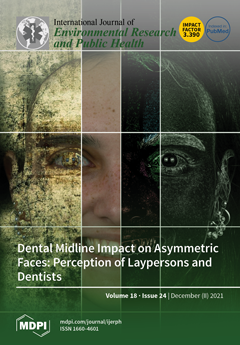Nurses and midwives are integral to public health promotion; in the UK, they are advised to act as role models by their governing body, but overweight or obesity rates are high. We explored whether obesity and dietary habits are related to attitudes towards healthy role modelling and health promotion practice. A total of 346 pre-registered UK nurses and midwives (92.6% female; 18–53 years) completed an online survey. Items included body composition, dietary habits assessed by the Lifestyle Behaviour Questionnaire (LBQ), attitudes towards being role models for health (RA: role attitudes) and attitudes toward health promotion practice (ATHPP): 33.8% of the sample self-reported as overweight or obese; 67.6% did not consume 5-a-day portions of fruit/veg; 31.5% reported a healthy diet; and 89.6% believed their diet could be healthier. Positive RA was significantly linked to health promotion engagement (HP) (ß = 0.33,
p < 0.001). Positive ATHPP was significantly predicted by lower BMI (ß = −0.08,
p = 0.078), positive RA (ß = 0.67,
p < 0.001), lower HP (ß = −0.25,
p < 0.001) and male gender (ß = 0.09,
p = 0.02). Greater confidence in patients valuing healthcare professional’s advice was predicted by healthier diet (ß = 0.11,
p = 0.03), lower BMI (ß = −0. 16,
p < 0.01), more positive RA (ß = 0.14,
p < 0.01) as well as HP engagement during training (ß = 0.20,
p < 0.01). One’s own motivation to promote health, similarly to ATHPP, was predicted by RA (ß = 0.17,
p = 0.001) and previous HP engagement (ß = 0.39,
p < 0.001). Findings show that overweight and obesity are prevalent in pre-registered nurses and midwives; the majority did not consume a healthy diet. Individual’s body composition, diet and attitudes towards role modelling are positively associated with their attitudes towards, and confidence in, health promotion practice. Experiences of health promotion practice during training can have either a positive or a negative influence on attitudes. Mentors and educators could actively promote healthy lifestyles for pre-registered nurses and midwives and facilitate more opportunities for health promotion practice during placements, which includes time for reflection.
Full article





